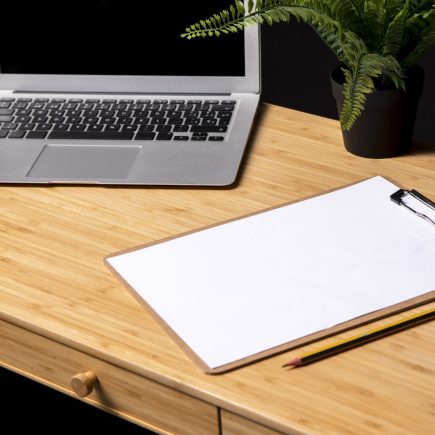Rattan furniture is celebrated for its timeless charm, making it a popular choice for both indoor and outdoor spaces. Known for being lightweight, durable, and stylish, rattan has a unique way of transforming any living room, patio, or conservatory. However, like any cherished piece of furniture, rattan can show signs of wear over time.

The good news is that restoring rattan furniture to its original beauty doesn’t require expert knowledge. With the right tools and a little patience, you can repair broken strands, fix wobbly legs, and address scratches, bringing your rattan furniture back to life. This article provides a step-by-step guide to help you repair your rattan furniture and keep it in top condition for years to come.
What You’ll Need
Before you get started with the repairs, gather the following tools and supplies:
- Sandpaper
- Soft cloth
- Replacement rattan strips or fibers (available online or at hardware stores)
- Adhesive (super glue or wood glue)
- Scissors or pliers
- Toothpicks (for applying glue or pressing rattan into tight spaces)
- Hairdryer (to soften rattan for easier weaving)
- Paint or varnish to match your furniture
- A bowl of warm water
- Furniture pads or rubber caps

Step 1: Clean the Furniture
Start by brushing off any debris with a soft-bristled brush. Then, mix a small amount of mild detergent with warm water and use a damp cloth to gently wipe down the furniture. Be sure not to soak the rattan to prevent damage. Finally, allow the furniture to air dry completely before moving on to repairs.
Step 2: Identify Damaged Areas
Once the furniture is clean, take the time to inspect it for damage. Look for the following common issues:
- Broken or loose strands
- Cracks or holes in the weave
- Sagging seats
- Wobbly legs
If you plan on replacing any strands, take photos of the original weave pattern to help you replicate it during the repair process.
Step 3: Fix Broken Strands
Broken rattan strands are a common problem, but they’re relatively easy to repair. Here’s how to fix them:
1. Remove the broken strands

Use scissors or pliers to trim away the broken pieces, leaving some slack on either end.
2. Prepare the replacement strands
Soak new rattan strips in warm water for about 30 minutes. This softens the fibers, making them easier to work with.
3. Use a hairdryer (optional)
To further soften and manipulate rattan, use a hairdryer to warm the area before weaving.
4. Weave in the new strands

Insert the soaked rattan strand into the furniture, carefully replicating the original weave. Use toothpicks or pliers to guide the new strand through tight spaces.
5. Secure the ends
Apply a small amount of glue to the ends of the new strand and tuck them beneath the existing weave. Hold in place until the glue dries.
Allow the glue to set for 24 hours before using the furniture.
Step 4: Repair Sagging Seats
If your rattan chair or seat is sagging, there are a couple of methods you can try to restore its firmness:
1. Moisture method
Lightly mist the seat with warm water using a damp cloth or plant mister. This softens the fibers, allowing them to contract and tighten as they dry.
2. Add support

If sagging persists, consider adding more cushions for extra support.
3. Weave in additional strips
For more extensive sagging, you can add extra rattan strips in the same way you would for broken strands.
Step 5: Fix Wobbly Chair Legs
Wobbly legs can make your furniture unstable and unsafe. Here’s how to fix them:
1. Check for uneven ground

Sometimes the wobble may be caused by uneven flooring. Try adding furniture pads or adjustable leg levelers.
2. Repair cracks
If the legs have cracks, clean the affected area and sand it down. Apply wood filler or glue to the crack, pressing it in with a toothpick. Allow it to dry, then sand the area smooth.
3. Replace broken strands in the legs
If the legs have damaged rattan strands, follow the same method as for fixing broken strands.
4. Avoid dragging
Always lift rattan furniture instead of dragging to prevent leg and fiber damage
Test the stability of the furniture before using it again.
Step 6: Finish and Protect the Furniture
Once the repairs are complete, it’s time to finish your furniture and protect it from further damage:
1. Sand rough areas
Use sandpaper to smooth out any rough patches or raised edges on the rattan.
2. Repaint or varnish

Apply a fresh coat of paint or varnish that matches the original finish. If the furniture will be used outdoors, choose a UV-resistant product to protect against sunlight.
3. Apply sealant
For added protection, consider using a protective sealant to guard against moisture and UV rays.
Love Your Rattan Furniture Again
There’s no need to part with your beloved rattan furniture just because it’s showing signs of wear. Whether it’s repairing broken strands, fixing sagging seats, or restoring wobbly legs, a little time and effort can bring these timeless pieces back to life. Not only does repairing your furniture save money, but it’s also a more sustainable choice, helping reduce waste.
FAQs
1. Is it worth repairing rattan furniture?
Yes, repairing rattan furniture is often cost-effective and sustainable, especially for high-quality pieces. It can extend the life of the furniture at a lower cost than replacing it.
2. How can I restore the color of faded rattan furniture?
To restore the color of faded rattan furniture, clean it thoroughly, then apply a rattan color restorer or a coat of varnish that matches the original color. For outdoor furniture, use UV-resistant varnish to protect it from further fading.
3. How do I keep my rattan from breaking?
To prevent rattan from breaking, avoid exposing it to excessive moisture, direct sunlight, or rough handling. Regularly clean it and apply a protective sealant or varnish to maintain its strength and appearance.























